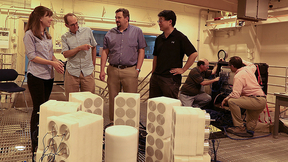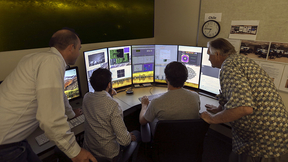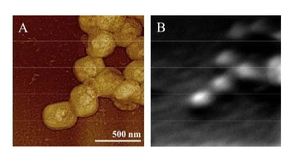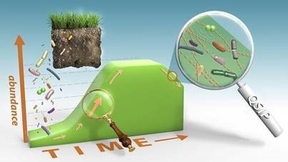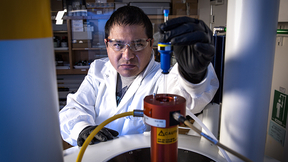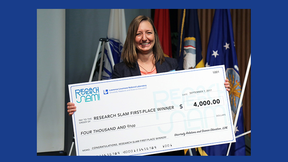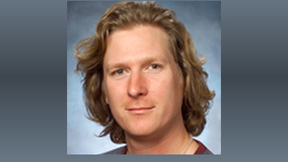Back
Nuclear emergency teams, safeguards specialists and others may one day benefit from an expanded nuclear fission chain theory and detectors developed by a team of Lawrence Livermore Nationla Laboratory (LLNL) physicists. The Livermore scientists have bolstered their theory for understanding nuclear fission chains -- a cascade of atomic nuclei splitting, each initiated by a…
Like a game of "hide and seek," Lawrence Livermore astrophysicists know that there are black holes hiding in the Milky Way, just not where. If they find them toward the galactic bulge (a tightly packed group of stars) and the Magellanic Clouds, then black holes as massive as 10,000 times the mass of the sun might make up dark matter. If they are only toward the galactic…
Because of their size, lack of symmetry, structural heterogeneity, and high molecular weight, most large animal and human viruses are not amenable to typical analytical techniques, such as x-ray crystallography, nuclear magnetic resonance analyses, or fine-scale reconstruction by cryo-electron microscopy. In a recently published paper in Analytical Chemistry, NACS and BBTD…
Ecological research focuses on understanding how population-level dynamics—such as the growth rate of a particular population of microbes—contribute to ecosystem-level processes. Ecosystem scientists researching climate change often study the role of microbes in the carbon cycle, for example, so knowing how quickly they grow is a fundamental metric to reaching that…
During their 15 years as a certified laboratory for the Organization for the Prohibition of Chemical Weapons (OPCW), a score of LLNL chemists have developed some first-rate habits. One of them is earning “A” grades on the organization’s environmental proficiency tests. In recently-announced results, LLNL earned its eighth straight “A” grade during last fall’s OPCW…
On Sept. 7, 2017, 12 postdoc finalists of Lawrence Livermore National Laboratory's 2017 Research Slam! talked for three minutes each about their work before a distinguished panel of judges. The postdocs were competing for monetary prizes of two, three and four thousand dollars for third, second and first place winners, but perhaps the biggest prize was the chance to…
Mavrik Zavarin has been named the new Director of The Glenn T. Seaborg Institute (GTSI) in the Physical & Life Sciences Directorate. In this capacity, Mavrik will continue to develop the GTSI's mission to carry out cutting-edge research in areas key to LLNL's Nuclear Security and Energy & Environment mission areas, with an emphasis on providing opportunities for…

